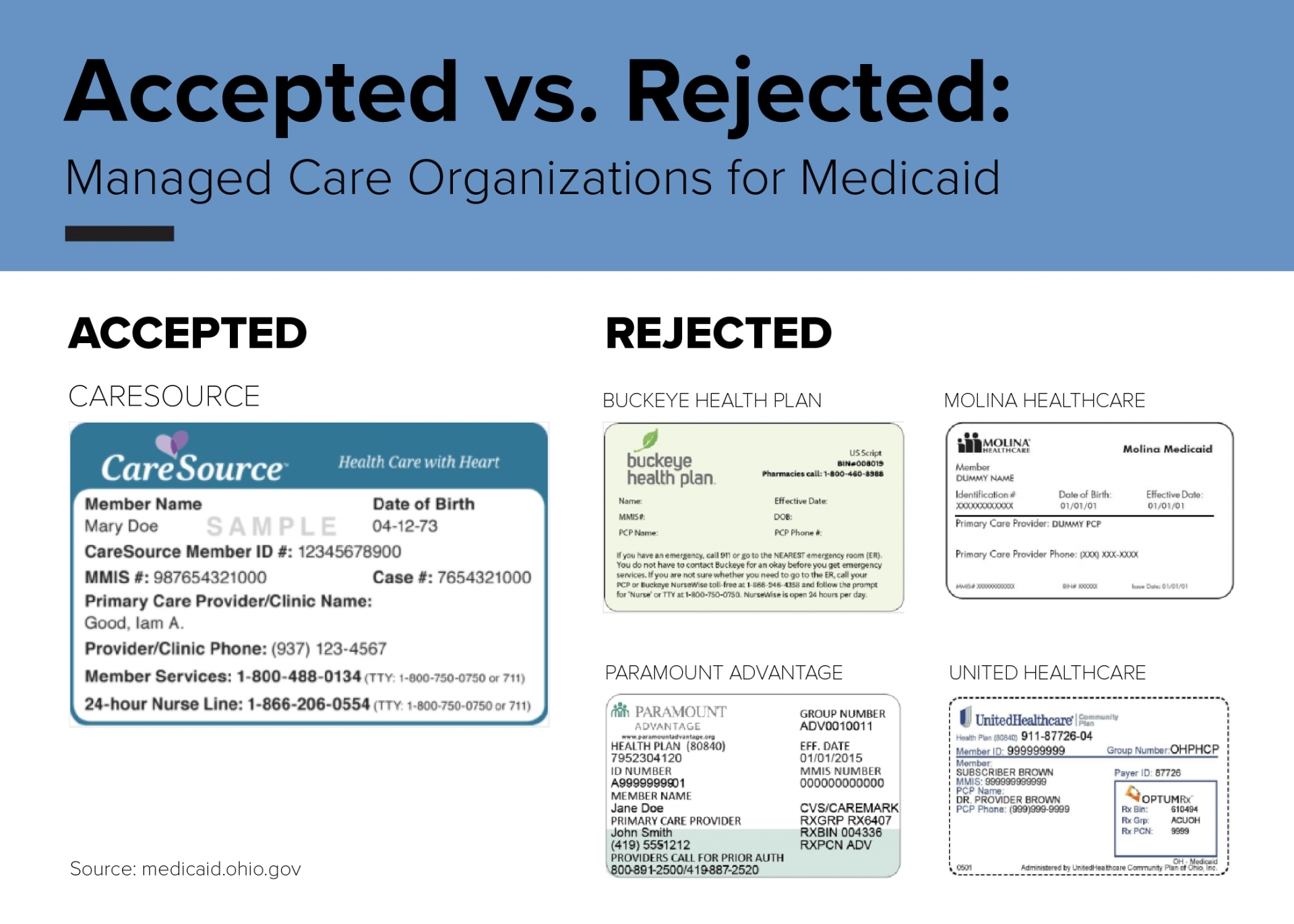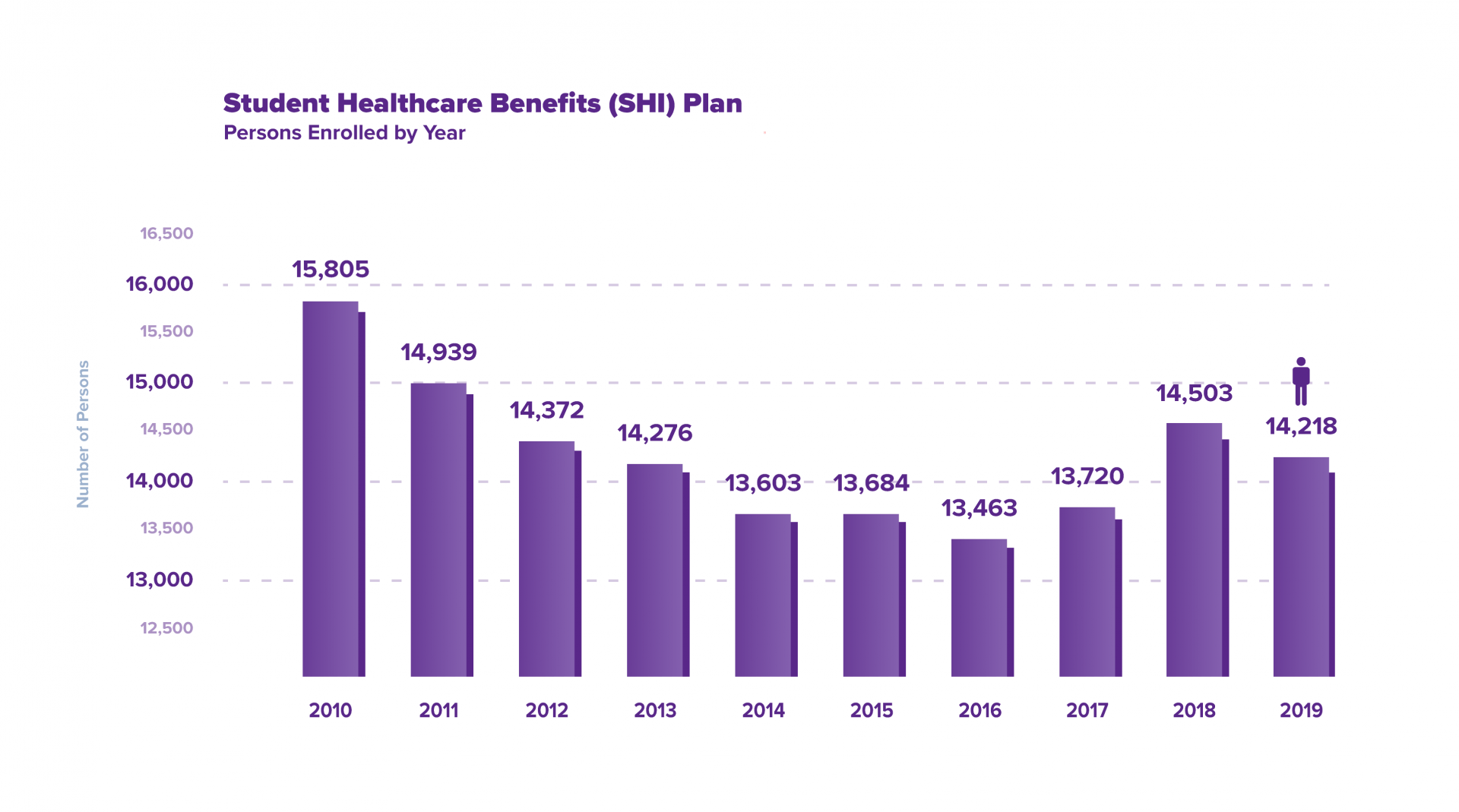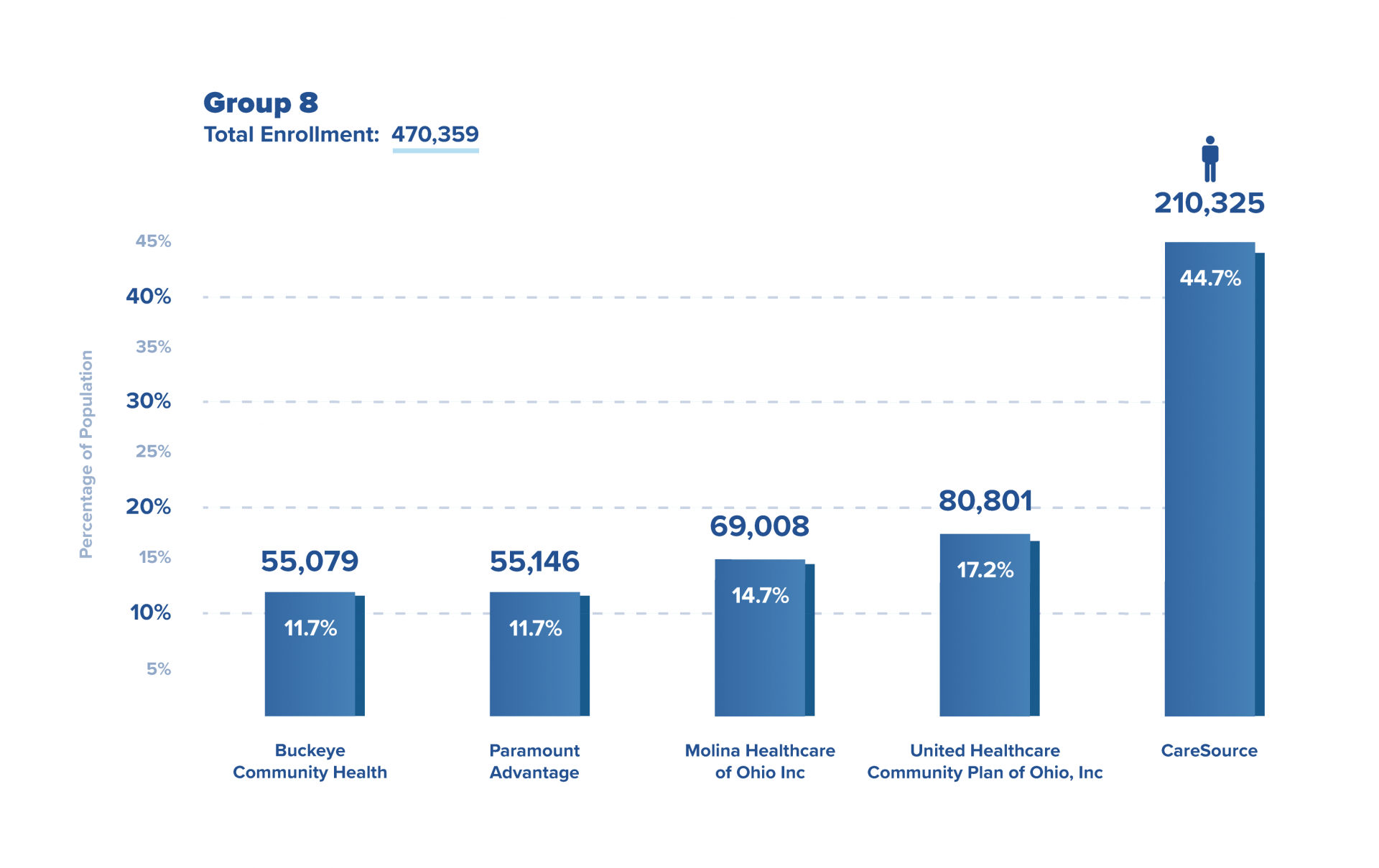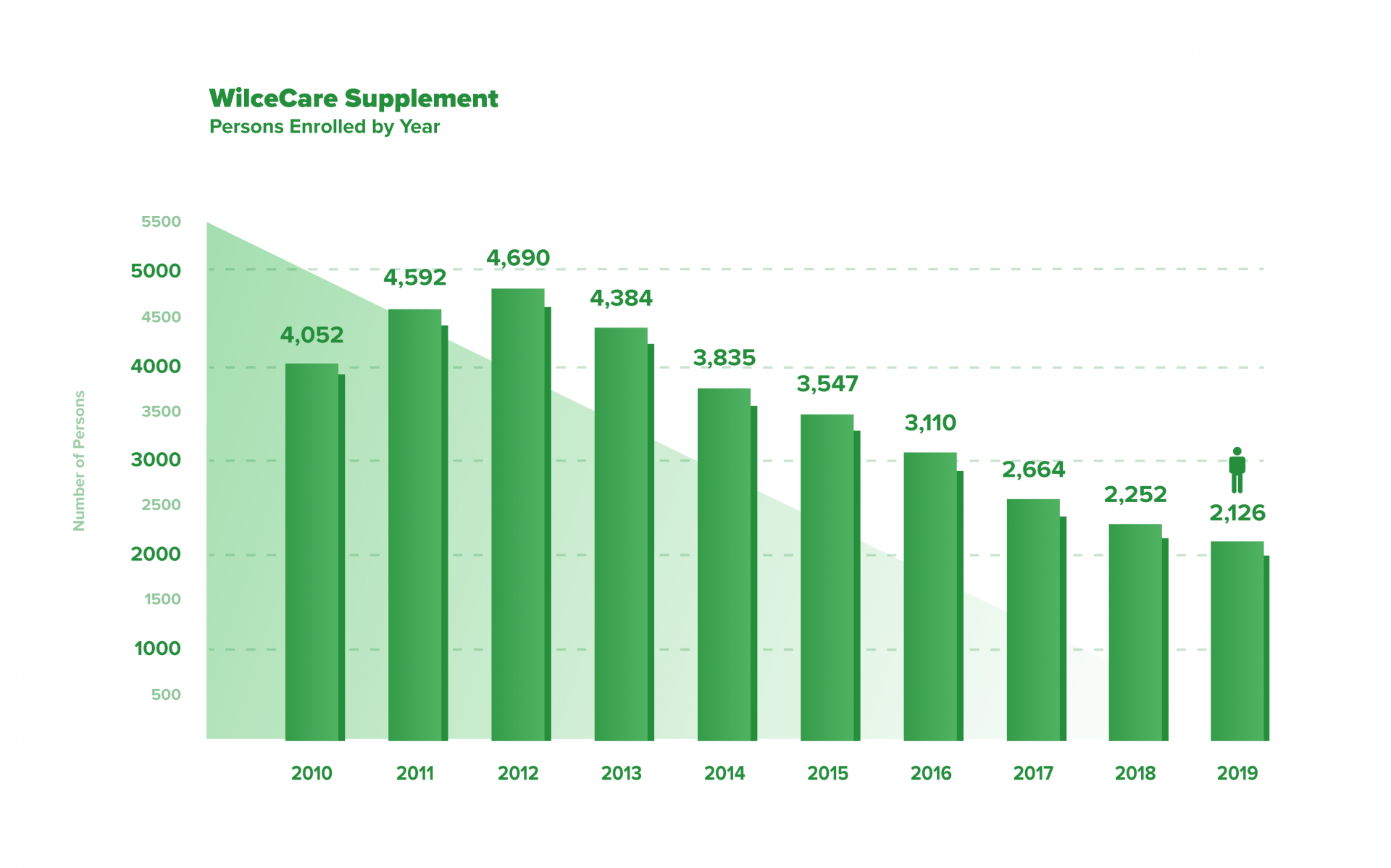Out of network: Students grapple with health insurance coverage at Ohio State
Health insurance is a headache, so much so that students may avoid health care on campus entirely. Two Ohio State students opted to travel home to California and Washington, D.C. for costly care to save a few thousand dollars per year on the student health insurance fee.

The John W. Wilce Student Health Center.
Christian Harsa|Asst. Photo Editor
Going to college means growing up and having to schedule your own doctor’s appointments. As scary as that is, it’s even scarier when your health insurance doesn’t work on campus.
Choosing a health insurance plan isn’t the most exciting thing to do, but paying out of pocket for a broken leg or sexually transmitted infection may put a damper on the college experience. If facing injury or illness with inadequate health insurance, college students could quickly find themselves paying more in hospital bills than tuition.
Students are presented with the option to purchase the university-sponsored student health insurance or waive the plan with existing coverage. The $3,366 annual cost of the student health insurance plan causes some to scrape by with out-of-network coverage or avoid health care on campus altogether, figuring they can just return home if they need an appointment.
Lily Powers, a 2020 alumna of Ohio State, and Indigo Butler, a fourth-year in international studies, both faced issues receiving medical care on campus due to health insurance constraints.
Powers had out-of-state private insurance that did not stretch to campus.
Butler, although covered by Ohio Medicaid, could not visit the on-campus health center without paying out of pocket. As a result, she sat on a months-long waiting list at other area hospitals.
“I thought that it was odd that it was so hard for me to see a doctor,” Butler said.
The solution for students like Powers and Butler may lie with Ohio State’s health insurance supplement, WilceCare. The seldom-used option serves as à la carte coverage at the centrally located, on-campus Wilce Student Health Center. Armed with WilceCare, which costs $225 per policy year, Powers and Butler could have visited the student health center without having to pay out of pocket.
Still, the added annual cost may deter students from purchasing the supplement. Some don’t perceive much risk by not having health insurance at college, since younger people tend to be healthier and spend less on health care.
Students with chronic physical or psychological conditions are especially at risk, as insurance issues on campus may interfere with routine checkups and monitoring that they received prior to attending Ohio State.
“If it’s not properly controlled, it can lead to longer-term negative consequences with worse health outcomes,” Dr. Wendy Xu, associate professor of health services management and policy at Ohio State, said.
Depression, anxiety, asthma and migraines are among the most common chronic conditions among college students. Up to 17.8 percent of college students report a diagnosis of both chronic depression and anxiety at some point in their life, 16.3 percent report asthma and 11.4 percent report migraines, according to the 2020 National College Health Assessment.
But what guarantees that students have adequate health care? Ohio State’s health insurance requirement does not prevent students from waiving university-sponsored insurance with out-of-network or otherwise inadequate coverage, meaning Powers and Butler are not the only students with the conflict.
Student Health Insurance may audit the waivers, enrolling students in the SHI Benefits Plan if their coverage is found to be inadequate, according to the Student Health Insurance website. Neither Powers nor Butler were audited throughout their time at Ohio State.
Attending college out of state
Not all insurance plans have a national network that students could use at Ohio State. Powers was enrolled in Kaiser Permanente insurance through her dad’s employer in California. She said the plan offered great coverage in California because there were a multitude of Kaiser facilities, but her closest in-network provider in Ohio was about two hours away in Akron or Cleveland.
Powers did not have a car on campus, so she said driving two hours to a doctor’s appointment wasn’t an option.

Marcy Paredes| For The Lantern
Even though she knew her Kaiser Permanente insurance plan was out of network in Columbus, Powers said she didn’t find it necessary to purchase Ohio State’s SHI Benefits Plan because she’s a healthy person overall. She said if she got sick frequently or had underlying medical conditions, she would have considered purchasing the coverage.
“I tried really hard not to go to the health care center because I knew that if I have to go, I will have to pay,” Powers said. “So I tried to maintain my body and my health pretty well so I would be able to last for a pretty long time. I was able to, but sometimes I need to get medicine or mental health stuff.”
Without insurance, a trip to the student health center may cost anywhere from $43 to $405 per primary care visit depending on whether a patient is new or established, the length of visit and severity of condition, according to the Student Health Services cost list.
Powers said she was able to see a mental health provider free of cost at Ohio State’s Counseling and Consultation Services, absolving her of any major out-of-pocket expenses in that regard.
She said over the course of her time at Ohio State, she had to go to the Wilce Student Health Center about 15 times to be prescribed medication — visits that were paid out of pocket. She said once prescribed her medication, she also faced greater out-of-network drug costs.
Medicaid on campus
Butler waived the SHI Benefits Plan with her Ohio Medicaid coverage. Ohio Medicaid enrollees pick a managed care organization to facilitate their coverage. Of the five major managed care organizations for Medicaid in Ohio, CareSource is the only plan accepted at the Wilce Student Health Center.

Richard Giang| Managing Editor for Design
While studying at Ohio State, Butler tried to see a primary care doctor for a checkup. Since she did not have CareSource, she could not go to the Wilce Student Health Center without paying out of pocket.
She tried to schedule an appointment outside of campus and had a three-month wait to see a primary care provider who would accept Medicaid. Since she was scheduled to return home to Washington, D.C., in about a month at the time, she opted to wait to see her provider at home who she knew accepted Medicaid.
Butler said she never faced any major medical issues while at Ohio State. If she had, she would’ve returned to D.C. so she could’ve seen a doctor quickly without venturing out of her Medicaid network and paying more.
She said she was surprised that Ohio State allowed her to waive the Student Health Insurance Benefits Plan at the start of the year when Medicaid didn’t cover her care at the Wilce Student Health Center.
Regardless, Butler said she chose not to buy the Student Health Insurance Benefits Plan or WilceCare supplement because it was unaffordable given her other expenses at the beginning of the semester.
“At the beginning of the school year it’s harder,” Butler said. “I still have to buy books, and on top of that I was paying rent and car insurance; it’s a lot of bills.”

Marcy Paredes| For The Lantern
If she had an emergency, Butler said she knew she could receive care in a pinch, even on Medicaid. The Emergency Medical and Treatment Labor Act requires hospitals with emergency rooms that accept Medicare to stabilize a patient in an emergency situation regardless of their ability to pay, according to the American College of Emergency Physicians website.
Select/waive process
Ohio State requires domestic students enrolled at least half-time in a degree-seeking program to hold health insurance. This amounts to six credit hours for undergraduates, four for graduates and professional students and three credits for post-candidacy, according to the Student Health Insurance website.
International students studying in the United States are required to purchase Ohio State’s Student Health Insurance Benefits Plan with a few exceptions, according to the Student Health Insurance website.
Each year, between 21 percent to 23 percent of Ohio State students choose to enroll in Ohio State’s SHI Benefits Plan, Maureen Cahill, director of Student Health Insurance, said.

Ivan Kostovski|Infographics Editor
The plan provides access to the Wilce Student Health Center on campus as well as more specialized services at the neighboring Wexner Medical Center plus mental health, prescription, dental and vision care.
Each year, students are required to fill out a waiver with proof of alternative insurance if they do not want to purchase Ohio State’s Student Health Insurance. If they do not complete the waiver, they will automatically be enrolled in the Student Health Insurance.
Students may waive the SHI Benefits Plan with alternative coverage, such as:
- A parent’s plan
- Employer-sponsored insurance
- Marketplace plan
- U.S. Government-sponsored plan
Although these outside plans suffice to waive Ohio State’s insurance plan, they may not sufficiently cover a student’s care on campus, as evidenced by Powers and Butler.
The Student Life Student Health Services website states that all students can access the health center.
However, like any medical facility, the Wilce Student Health Center does not accept all health insurance plans. The issue emerges when a student is able to waive the health insurance requirement with a plan that is out of network at the student health center.
Affordability
Most people who are approved for Medicaid are covered under Medicaid Managed Care. Enrollees can choose a Medicaid Managed Care Organization to best suit their needs. If they do not select an organization, one will be assigned to them by the Ohio Department of Medicaid.
CareSource, the sole Medicaid plan accepted at the Wilce Student Health Center, covers 44.7 percent of Group 8 Medicaid enrollees in Ohio as of January 2020, according to the Ohio Department of Medicaid Enrollment Report.

Ivan Kostovski|Infographics Editor
Group 8 enrollees are aged 19 to 64 and fall between 0 and 138 percent of the federal poverty level and are not eligible for Medicaid through other means such as having children or being “aged, blind or disabled.”
Not all Ohio universities are equally Medicaid-friendly. OhioHealth Campus Care at Ohio University accepts all five major Medicaid Managed Care plans available in Ohio plus Aetna’s Medicaid plan, an OhioHealth spokesperson said.
The Miami University Health Services clinic accepts Medicaid through Caresource, Molina and Buckeye Health Plan. The clinic also accepts Kentucky and Indiana Medicaid, Terri Buzzell, Director of Health Services at Miami University, said.
Ohio State spokesperson Dave Isaacs said the Medicaid marketplace and managed care options in Ohio change frequently, so the university regularly reevaluates its contracts.
“Student Life Student Health Services regularly assesses contractual relationships to identify those that best serve both students and the university, including managed care Medicaid programs that may be a good fit for both,” Isaacs said.
Although Medicaid acceptance at the Wilce Student Health Center may be sparse, students enrolled in Medicaid plans, like Butler, can seek care at other hospitals throughout Ohio, which sometimes include a long waiting period. Out-of-state students enrolled in Medicaid in their home state, on the other hand, would typically not be eligible to receive care in Ohio except in an emergency circumstance.
Some states allow students attending university from another state to be considered a resident in order to be eligible for Medicaid, but Ohio does not offer this option, a spokesperson for the Centers for Medicare & Medicaid Services said.
Cahill said students are encouraged to talk with their health insurance provider to figure out whether their insurance coverage will follow them to college.
“The students themselves have articulated the real challenge,” Cahill said. “‘What happens if I go to Ohio State and I’m in Columbus, Ohio. How do I get care?’ So we really encourage students and families to get out ahead of it so they don’t get caught.”
Cahill said student health insurance plans, which are classified under the Affordable Care Act as individual insurance, are crafted to suit the mobility that college students may experience. Ohio State’s SHI Benefits Plan is a partnership with United Healthcare, giving students access to a national network.
“The beauty about student health insurance is it’s built around the student,” Cahill said. “It’s built for the student and around the student, so it follows them wherever they go.”
But for Butler and Powers, Ohio State’s Student Health Insurance Benefits Plan did not seem worthwhile enough to purchase, as both students opted to travel home if they needed serious medical care.
At a fraction of the cost, students can purchase the WilceCare supplement. The supplement isn’t an insurance plan in itself but is meant to complement insurance plans that are otherwise out of network and would require payment out of pocket at the Wilce Student Health Center, according to the Student Health Insurance website.
The WilceCare Supplement has been decreasing in popularity since 2010 with no single identifiable cause, Cahill said in an email.

Ivan Kostovski|Infographics Editor
If affordability is the main sticking point preventing students from buying the Student Health Insurance Benefits Plan, Cahill said some financial aid packages can be applied to the fees for the plan. Students can also pay for the plan through the Tuition Option Payment Plan, which breaks down the cost of attendance into installments of four payments.
Importance of health care in college
Although the college population tends to be relatively healthy, Xu said it’s important that college students have routine access to a primary care provider to receive preventative care and stave off long-term health problems.
“If your Medicaid insurance coverage is obtained from where you’re from in Cleveland and every time you have to travel back to Cleveland to see your regular primary care physician, that would be a hassle and cause a reduction in the primary use of health care, even when needed,” Xu said.
Luckily, neither Powers nor Butler suffered serious or costly enough medical conditions to return home. Still, Powers delayed updating her prescription and ordering contact lenses until returning to California and Butler delayed her primary care visit.
Ohio State does not plan to change its policy for allowing students to waive the student health insurance requirement with out-of-network plans, but continues to encourage students and families to evaluate insurance coverage ahead of time to avoid “surprising or unanticipated” health care costs while attending college, Isaacs said.
Web Design by Jack Long | Managing Editor for Digital Content
